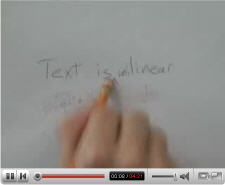Twitter is a way to broadcast via your cell phone or computer. What do you broadcast? Whatever is immediate and local. You disclose your thoughts, observations and whereabouts — and anything else you can fit within a 140-character limit text message. Here’s an unofficial Twitter wiki. Its Press and Media section has links to some of the latest buzz on this social media app.
Twitter appeared quickly and will, in my opinion, flame out just as fast. Once it has died back down to a glowing ember, I suspect it will reside where it seems most suited: with younger students and others with plenty of time, a big friends list, and a high opinion of their own text-messaged voices.
Because your cell phone can get deluged with “Tweets” (one attendee of the SXSW conference in Austin reported receiving 3,000 of them during her time there), it appears that most people finally turn the mobile feature off. Who of us, after all, has an unlimited text message plan and a high tolerance for deleting messages as fast as they arrive?
But turning off the ability to receive these messages on my cell phone takes away one of Twitter’s major appeals: The ability to “microblog” from anywhere, and read other people’s insights dashed off from whatever house party or night club you weren’t able to get to.
I’m always looking at these phenomena for how they might bubble up into the generations of working stiffs who are hoping technology can aid their productivity — or ease their workday the way a smoke break used to when more people smoked.
This technology has me curious, but unless there is some improved way to filter the spamming effect I don’t see Twitter as surviving the battle for mainstream relevance.
April 17, 2007 — An update:This weekend I succumbed. I needed to experience Twitter for myself, especially since I was reading intriguing comments on other people’s blogs, including this one. Keeping the mobile component turned off, I created this account: http://twitter.com/TheLarch (yes, I dropped my name’s trailing “e” — it’s a silly Monty Python joke).
Â
I’ll do a new entry soon with my thoughts.

